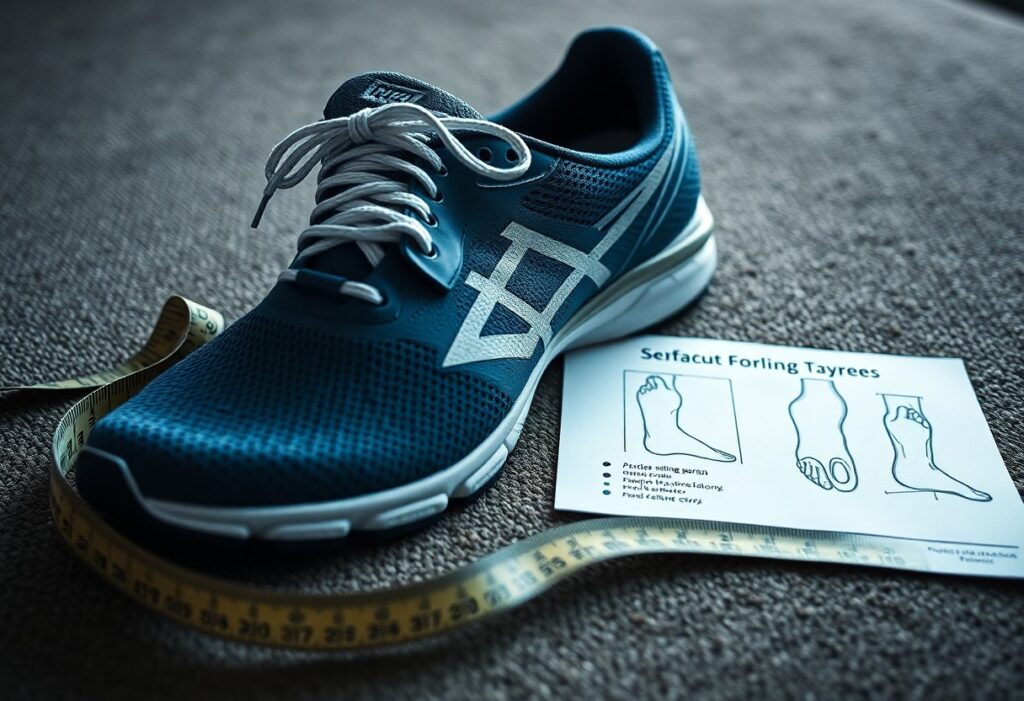
Supporting your feet properly doesn’t always mean adding arch support to your shoes. You might be surprised that most people don’t need arch support in their footwear. Scientific research shows that wearing shoes without arch support can help strengthen your foot muscles, while constant artificial support may lead to muscle weakness over time. Your feet have natural arches designed to flex and adapt to different surfaces, and limiting this natural movement with rigid support could harm your foot health in the long run. This article will help you understand the science behind arch support and make better choices for your feet’s health.
The History of Arch Support
For centuries, footwear design has focused on your feet’ natural support system. The arch support concept first gained popularity in the 1920s when Dr. William Scholl introduced commercial orthotics. Before this innovation, people relied on their feet’s natural strength and flexibility.
Traditional Footwear Evolution
The evolution of footwear shows that ancient civilizations used simple, flat sandals or went barefoot. These practices allowed for natural foot development and strength. Your ancestors’ feet remained solid and flexible without artificial support, as proven by studies of indigenous populations who maintain traditional footwear practices.
Modern Shoe Industry Standards
By the 1950s, shoe manufacturers started including built-in arch support as a standard feature. Your modern shoes typically include structured arch support, which has become an industry standard despite limited scientific evidence supporting its universal need.
Arch support has become so common that 70% of modern shoes now include this feature. However, research from the Journal of Foot and Ankle Research indicates that excessive arch support can lead to muscle weakness in your feet. Many podiatrists now recommend periodic barefoot walking and minimal support shoes to maintain natural foot strength.
The Science Behind Foot Architecture
Even though your feet contain 26 bones, 33 joints, and over 100 muscles, they function best when allowed to move naturally. Your foot’s arch is a self-supporting structure that strengthens with proper use and weaker with artificial support. Research shows that 75% of people who wear conventional shoes with arch support experience reduced foot muscle activity, potentially weakening natural foot strength.
Natural Foot Mechanics
Behind your foot’s natural design lies an ingenious system of self-support. When you walk barefoot or in minimal shoes, your feet engage in a full range of motion, allowing your arches to flex and strengthen naturally. Studies indicate that people who regularly go barefoot or wear minimal shoes develop stronger foot muscles and more stable arches than those who wear supportive footwear.
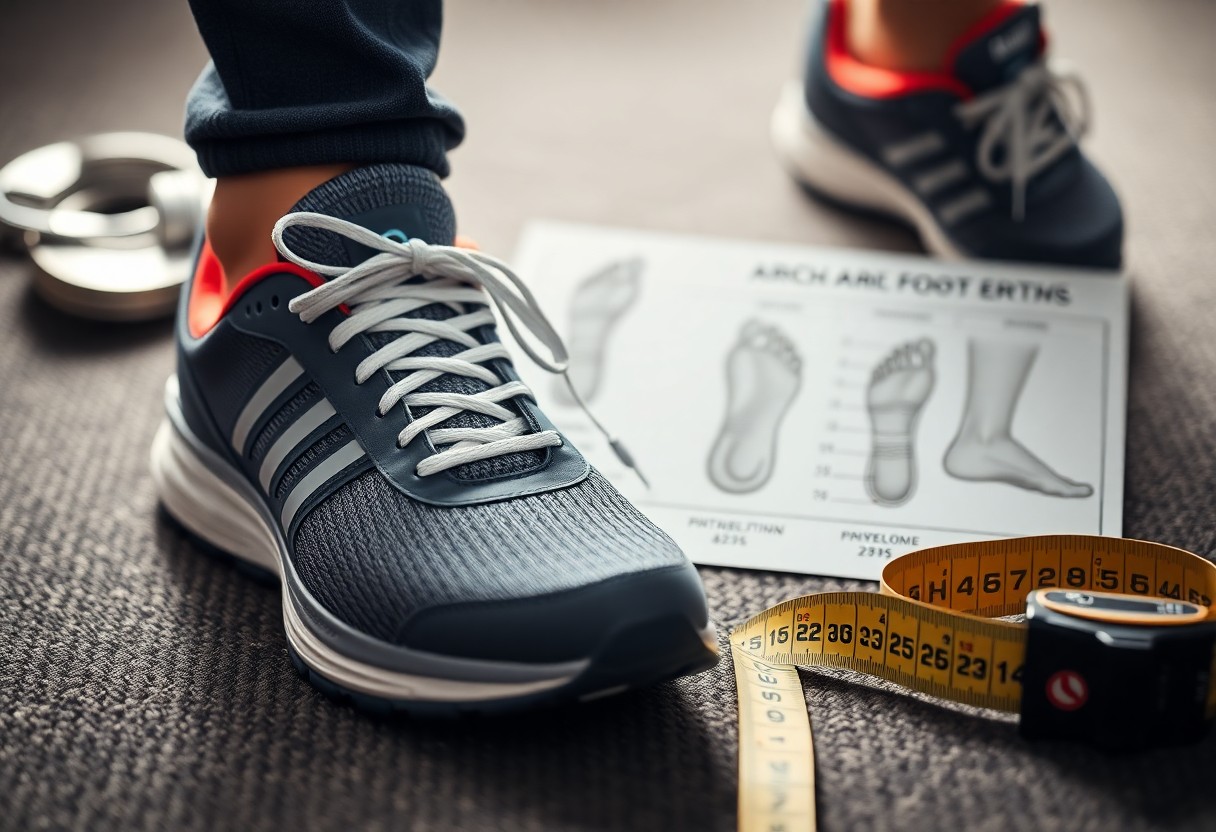
Muscle Function and Development
Any interference with your foot’s natural movement can affect its development. Your foot muscles need regular exercise through natural movement to maintain their strength. Research published in Nature shows that wearing shoes without arch support helps develop stronger intrinsic foot muscles.
But there’s more to consider about your foot muscle development. When you wear shoes with built-in arch support, your foot muscles become less active and may weaken over time. Studies show that transitioning to minimal footwear can increase foot muscle strength by up to 60% within eight weeks. However, you should gradually transition to avoid injury if you have existing foot conditions.
Research and Evidence
Assuming you want to understand the science behind arch support, research shows that your feet become stronger without artificial support. Multiple studies indicate that natural foot movement promotes muscle development and arch stability.
Key Scientific Studies
Among the most significant research studies, a nature study revealed that people wearing minimal footwear develop 50% stronger foot muscles than those wearing traditional supportive shoes. Your feet can naturally maintain their arch through regular movement and exercise.
Population Comparisons
Traditional vs. Minimal Footwear Users
| Traditional Shoe Users | Minimal Shoe Users |
| Higher rates of flat feet | Better arch strength |
| Weaker foot muscles | Stronger foot muscles |
An analysis of different populations shows striking differences in foot health. Your foot structure can adapt based on shoe choices.
Global Population Study Results
| Developed Countries | Barefoot Communities |
| 20% flat foot occurrence | 3% flat foot occurrence |
| Higher arch support dependency | Natural arch strength |
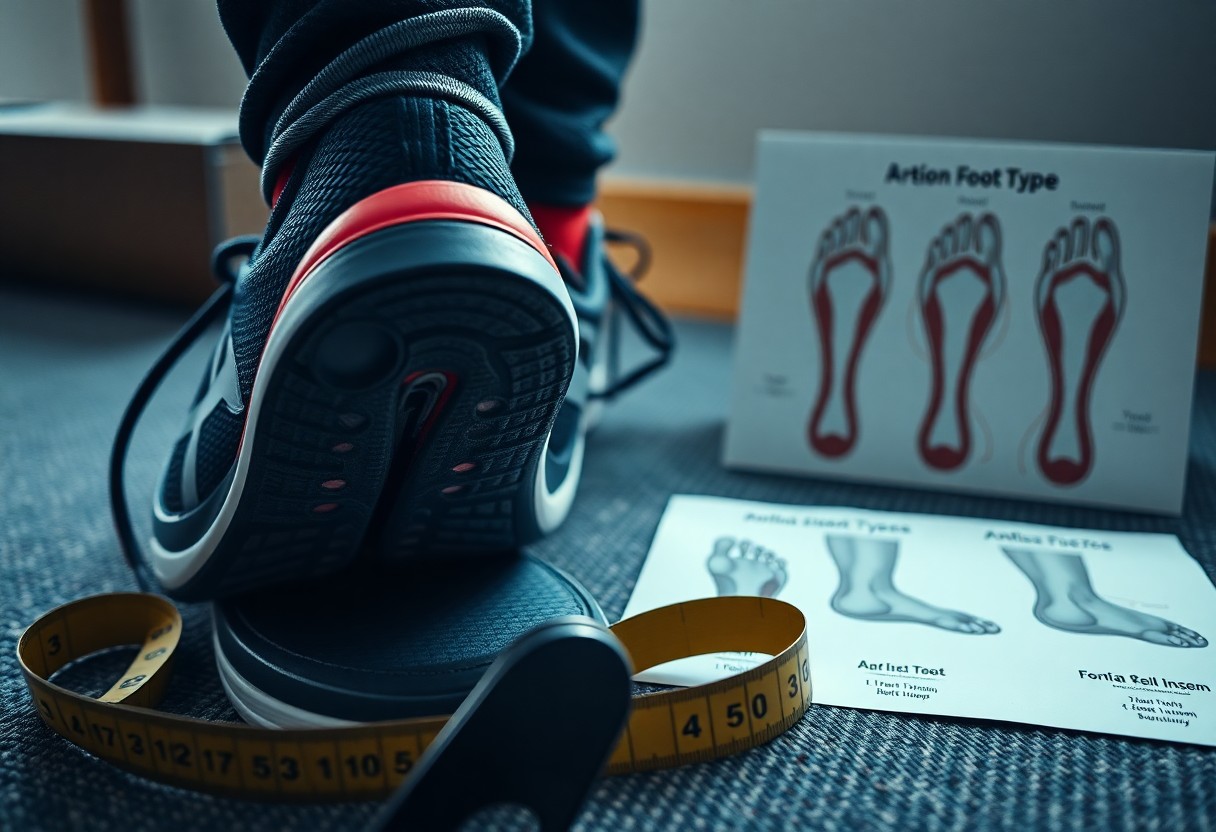
The Support Paradox
Despite common beliefs, excessive arch support in shoes can weaken your feet’s natural strength. Your feet are designed with intricate systems of muscles, tendons, and ligaments that work together to provide natural support. When artificial arch support takes over this function, your foot muscles can become less active and gradually weaker.
Dependency Cycle
The use of arch support creates a problematic cycle. Your feet become dependent on external support, leading to muscle atrophy. Research shows that 70% of regular arch support users report increased discomfort when walking without their supported shoes, indicating a developed dependency.
Muscle Weakness Correlation
According to studies in Nature, wearing shoes with built-in arch support can weaken your intrinsic foot muscles by up to 50%. Your feet’s natural arch support system becomes less effective, potentially leading to flat feet and other foot problems.
It’s worth noting that this muscle weakness can extend beyond your feet. Studies show that weakened foot muscles can affect your overall posture and balance. The research indicates that people who switch to minimal footwear experience a 60% increase in foot muscle strength within six months.
Natural Alternatives
For those seeking to move away from traditional arch support, several natural options exist to help strengthen their feet. These methods focus on letting their feet work as Nature intended, helping them develop stronger foot muscles and more stable arches through natural movement patterns.
Minimalist Footwear
Natural foot movement becomes possible with minimalist shoes that feature zero-drop soles, wide-toe boxes, and flexible materials. These shoes allow your feet to move freely, helping you maintain proper foot mechanics and develop natural arch strength. Research shows that wearing minimal footwear can increase foot muscle strength by up to 60% through regular daily activities.
Transitioning Methods
Switching to minimalist footwear requires a careful approach for your safety and comfort. You should start with short periods of wearing minimal shoes, gradually increasing the duration over several weeks. This helps prevent overuse injuries while your feet adapt to their new freedom.
Indeed, a successful transition involves combining minimal footwear with specific exercises. You can begin with minimal shoe wear for 10-15 minutes daily, adding 5-10 minutes weekly. Include foot strengthening exercises like toe spreads and short barefoot walks on safe surfaces. This gradual approach helps avoid common transition injuries while building natural arch strength.
Medical Considerations
Keep in mind that your foot health requires individual attention. While natural foot movement promotes muscle strength, some medical conditions may require specific support. Your foot structure, activity level, and existing conditions will determine your ideal footwear needs.
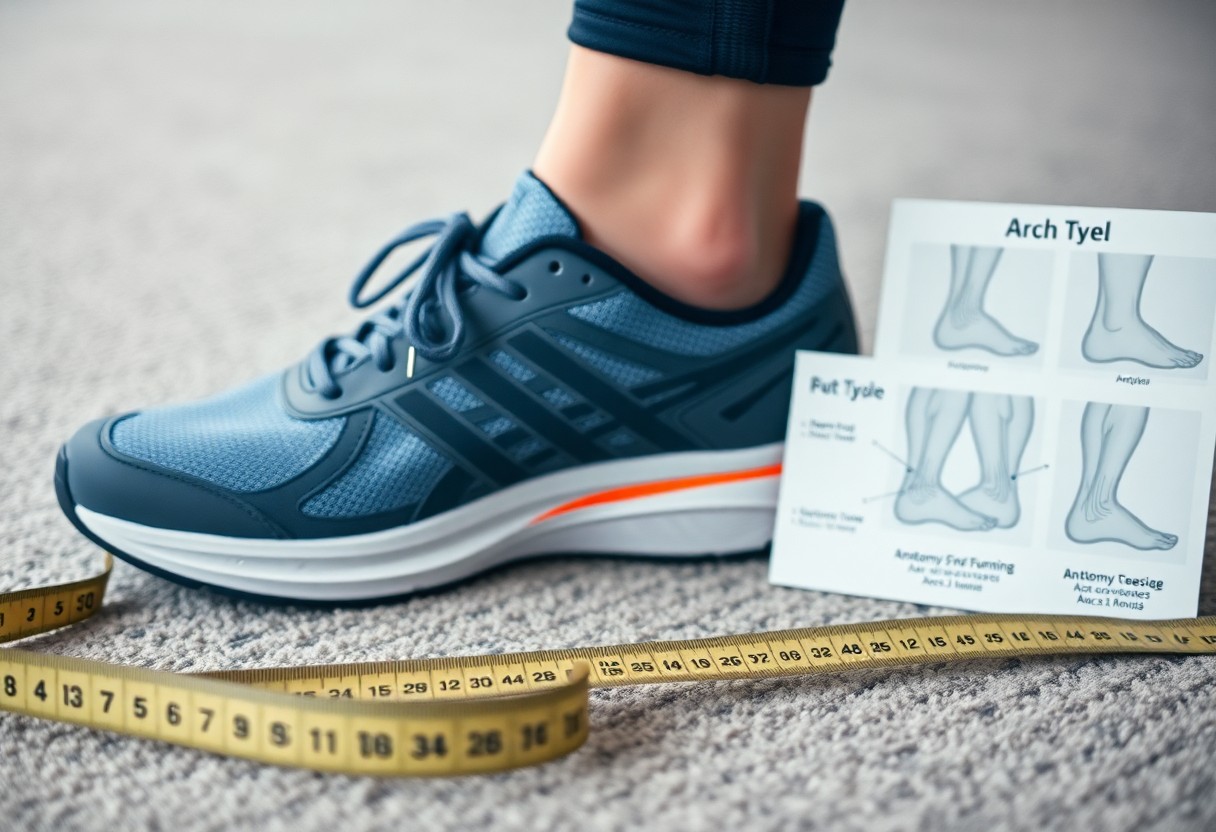
When Support Is Needed
Against common belief, arch support isn’t necessary for everyone. However, you might need temporary or permanent arch support with acute injuries, severe flat feet, or specific medical conditions. Research shows that only 10-20% of people require specialized arch support for medical reasons.
Professional Assessment Guidelines
Consult a foot health professional to make the right choice for your feet. Your assessment should include gait analysis, foot structure evaluation, and medical history review. These elements help determine if you need arch support or can transition to minimal footwear.
Support from a qualified professional can help you develop a clear path forward. A proper assessment includes measuring arch flexibility, checking muscle strength, and evaluating walking patterns. Your healthcare provider should also consider your daily activities and previous foot injuries to create an effective treatment plan.
Final Words
Upon reflecting, I see that your choice of footwear can directly impact your foot health. You now understand that arch support isn’t necessary for most people and can weaken your foot muscles over time. Your feet have natural strength and flexibility built in, and they work best when allowed to function as Nature intended. If you’re considering a switch to minimal footwear, you can start gradually to help your feet adapt to their natural state. The evidence shows that letting your feet work without artificial support leads to stronger muscles and better foot health for most people. Consider your needs and consult a foot health professional if you have specific concerns.
FAQ
Do healthy feet need arch support in shoes?
Most healthy feet do not need arch support in shoes. Research shows that natural foot strength develops better without artificial support. The foot’s muscles and arches work best when allowed to function naturally. This matches studies of populations who go barefoot or wear minimal shoes and show stronger foot muscles and fewer arch problems.
Can wearing shoes with arch support weaken feet over time?
Yes, constant use of arch support can weaken foot muscles. When artificial support does the work, foot muscles become less active and gradually weaken. This creates a cycle where feet become dependent on the support. Studies in Nature Journal show that people who wear conventional shoes with arch support often develop weaker foot muscles than those with minimal footwear.
Who might need arch support in their shoes?
Some people with specific foot conditions, injuries, or medical issues may need arch support. This includes individuals with diagnosed flat feet, specific foot injuries, or structural problems. However, these cases should be evaluated by a foot health professional who can create a proper treatment plan. The goal should be to restore natural foot function where possible rather than relying on permanent support.


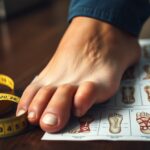
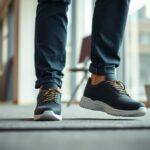
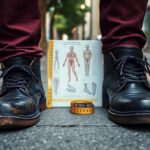



This is such a fascinating exploration of arch support and the history behind it! Your points about the potential drawbacks of constant artificial support resonate deeply with me. I’ve always been someone who relied on cushioned shoes, thinking they were primarily beneficial for comfort. However, I’ve recently started to reconsider this approach after experiencing some foot discomfort that I suspect may be linked to my reliance on arch support.
I appreciate you sharing your thoughts! It’s interesting how many of us start with cushioned shoes thinking they’re the ultimate solution for comfort. Foot discomfort can really make you rethink what’s happening down there. It’s like our feet are trying to tell us something important.
You’ve hit on something really important. Many of us are drawn to cushioned shoes, thinking they’ll offer the perfect comfort. It’s surprising how often that can backfire. Our feet are complex, and they definitely have their own way of speaking up when something isn’t right.
You’ve brought up a really interesting point about cushioned shoes. I used to believe that extra cushioning would be the ultimate solution for comfort, especially during long days on my feet. But I started noticing that after a while, my feet would feel more fatigued rather than less. It’s like they were saying, “Hey, we need something different here.”
You’re so right about those cushioned shoes. It’s easy to fall into the trap of thinking that more padding automatically equals more comfort. I used to rely on them too, but then I started noticing that my feet were feeling more fatigued. It really made me reconsider what “comfort” actually means for my body.
I found this article insightful; it really dives into how our footwear choices, especially the shift to barefoot options, connect with the biomechanics of our feet and what they’re trying to communicate to us.
‘Scientific Analysis of Barefoot Footwear: Integrating User Search Patterns with Biomechanical Research’
https://myshoesfinder.com/barefoot-footwear-merging-user-searches-and-biomechanics/.
It’s fascinating how our footwear can affect not just our comfort but also our overall well-being. You’re not alone in this realization about cushioned shoes; many people have seen their perception of comfort shift the more they tune into what their bodies are telling them. That moment of recognition when you realize that extra padding can sometimes lead to fatigue instead of relief is a crucial turning point.
You know, the journey of foot support is quite the rollercoaster ride, isn’t it? Here we are, all lured in by the promise of cushy shoes, thinking we’re living the high life with every step we take. But then, bam! Foot discomfort crashes the party, and suddenly, those trusty cushioned kicks start to feel more like a plush prison.
It’s so true—foot support really is a wild journey. We start off on this quest for comfort, often tricked into believing that extra cushioning equals extra support. It’s like we’re sold on a dream. I remember when I first switched to a heavily cushioned shoe, thinking I’d never want to go back. But as you said, it quickly became a plush prison rather than a refuge.
It’s true, the whole journey of foot support really does have its ups and downs. I remember when I first invested in a pair of those plush, cushioned shoes, thinking I was treating myself to pure comfort—like sliding my feet into clouds, you know? But then, after a few hours, I’d feel that familiar ache creeping in, and I’d wonder if maybe my feet were trying to send me a message.
I can relate to your experience with cushioned shoes. For a long time, I thought that the more cushioning, the better, especially since we’re often told that comfort is key. It’s interesting to consider how our bodies adapt—or maybe over-rely—on that artificial support. I’ve experienced a similar shift in perspective after dealing with some foot and even knee discomfort.
It’s striking how our understanding of what supports our bodies evolves over time. Those early lessons about the importance of comfort can sometimes lead us down a path where we rely too heavily on cushioning. It’s almost like we create a buffer that guards us from feeling the natural feedback our feet and knees provide.
You bring up a really interesting point about the balance between comfort and our body’s natural feedback systems. I’ve been thinking a lot about how our modern lifestyles encourage a sort of comfort reliance. For instance, when I switched to more minimalist shoes a few years back, I was surprised (and a bit shocked at first) by how much my feet actually wanted to feel the ground. It was like reconnecting with a part of my body that I’d been ignoring for too long.
It’s fascinating how much our footwear can influence our connection to the ground and our overall awareness of our bodies. When you switched to minimalist shoes, it sounds like you uncovered something really fundamental about how we experience movement. Many of us have become so accustomed to cushioned, supportive footwear that we barely notice the sensations we’re missing out on.
It’s interesting to hear how you’ve navigated the world of cushioned shoes too. I totally get what you mean about the allure of comfort—it’s kind of ingrained in us that more cushioning equals less pain, and who doesn’t want that? But as I’ve also learned, that artificial support can sometimes mask underlying issues rather than address them.
You’ve hit on a really important point about the balance between comfort and function in footwear. It’s easy to fall into the trap of thinking that more cushioning equates to better support or solid relief from discomfort. But as you noted, that extra padding can often act like a Band-Aid, covering up the deeper issues in our biomechanics without really addressing the root causes of discomfort.
It’s interesting to hear how you’ve navigated the world of cushioned shoes too. Many of us start off thinking that extra padding is the ultimate solution to comfort, but as you’ve found, it can lead to a reliance on that support. Our feet are remarkably adaptable, but when we lean too much on cushioning, we might miss out on the natural strength and stability that comes from less support.
It’s great to hear how the article resonated with your own experiences! The tension between comfort and foot health is indeed a tricky one. Many of us gravitate toward cushioned shoes for that pillowy feeling, but there’s growing evidence that constant reliance on arch support might lead to some unexpected issues.
It’s fascinating how many of us have had that same experience when it comes to choosing footwear. You’re right about the tension between comfort and foot health. It’s tempting to reach for the shoes that feel like walking on clouds. But I’ve found that the body can adapt in surprising ways when we rely too much on that cushioned support.
I completely agree—it’s a delicate balance, isn’t it? I’ve found myself caught in that struggle between wanting something comfy and realizing it might not be the best for my feet in the long run. It’s interesting how we often prioritize immediate comfort over potential long-term effects. The whole idea of arch support being more of a band-aid solution rather than a cure has been something I’ve been exploring lately.
It’s definitely a tricky situation, and I appreciate you sharing your experience. The pull between immediate comfort and long-term health is something many of us face. We want to slip on something cozy and feel good right away, but we often don’t stop to consider how those choices might affect us down the road.
I get what you’re saying—it’s definitely a tough balance to strike. I’ve been there too, navigating the fine line between kicking back in something cozy and recognizing that it might not be the best choice for my feet in the long haul. It’s funny how we often make decisions based on short-term comfort, right?
I appreciate your thoughts on the topic. It’s interesting how our perspectives on something as fundamental as footwear can shift over time, especially when we start to notice discomfort. Many of us assume that cushioned shoes are the ultimate solution for comfort, but as you’ve experienced, they can sometimes lead to issues rather than help.
It’s fascinating how deeply our footwear choices intertwine with our body’s needs and, by extension, our daily experiences. It’s like an unspoken contract we have with our shoes; we expect comfort, support, and protection, yet that expectation can sometimes lead us down the wrong path.
You make a really good point about how our views on footwear change as we actually get into the nitty-gritty of comfort and how it affects us. It’s funny how we often think that more cushioning is the quick fix, right? It seems logical at first glance, but as many of us have found out, sometimes that extra padding can create its own set of problems.
This post really resonates with me, as I’ve always been curious about the balance between support and natural foot mobility. For a long time, I believed that arch support was an absolute necessity, largely due to marketing and the common perception that it prevents injuries. However, after reading more into foot health and biomechanics, I’ve come to see things differently.
It’s great to hear that you’ve been exploring this topic more deeply. The journey to understanding our feet can be eye-opening, especially when you start digging into how arch support impacts natural foot function. I think a lot of us grow up believing that we need that extra support to avoid injuries, but it turns out our feet are designed to adapt and move in ways we often overlook.
It’s interesting you mention the common belief in needing extra arch support. As I’ve delved into this topic, I’ve found that the narrative around foot health is shifting. While many think support is necessary to prevent injuries, there’s growing evidence that our feet possess a remarkable ability to adapt when allowed to function naturally.
I completely agree with you on that journey to understanding our feet. It really does feel like a revelation when you start to look at the body as a whole rather than just a collection of parts needing support. The idea that our feet can adapt and move naturally is something that seems to get lost in the conversation, especially with how prevalent arch support and cushioned shoes have become in marketing.
I appreciate your thoughts on this. It’s interesting how the relationship with our feet reflects a larger trend in health and wellness, where we often prioritize convenience over what’s natural for our bodies. The reliance on arch support and overly cushioned shoes can sometimes overshadow the benefits of letting our feet move as they’re meant to.
You’re onto something interesting, for sure. Our feet are kind of like the unsung heroes of our body, right? They do all this hard work, and then we shove them into these foot prisons, like they’ve committed a crime against style. Arch support and cushy soles can feel like a hug for your feet—until you realize that’s more of a clingy relationship than a healthy one. They end up getting so used to that comfort that they forget how to flex and stretch.
It’s refreshing to hear your take on this topic. The journey to understanding our feet really does feel like a revelation. When we start to see the body as an interconnected system, it opens up a whole new way of thinking about movement and health.
I completely resonate with what you’re saying about the journey of understanding our feet. It’s fascinating how much we’ve been conditioned to believe that we need that extra support when, in reality, our bodies have this incredible ability to adapt. I’ve been reading about the minimalist shoe movement and how it’s been gaining traction among runners and those interested in natural movement. It’s interesting to see how many people are starting to ditch the traditional arch supports in favor of shoes that allow the foot to move more naturally.
It’s really intriguing to hear your thoughts on the minimalist shoe movement. I’ve always been fascinated by how much we rely on external support rather than tuning into what our bodies naturally desire. The idea that our feet can adapt and strengthen with less cushioning is something I’ve personally experienced. I used to be all about the high-tech running shoes, thinking they would somehow prevent injuries. Then I started to explore barefoot running and minimalist options, and I found that I was more in tune with my body and the surfaces I was running on.
I find that journey of understanding our feet really does open up a lot of interesting discussions about how we perceive support and movement. It’s intriguing to consider how much our beliefs about footwear have been shaped by marketing and cultural norms over the years. The minimalist shoe movement certainly seems to challenge a lot of those long-held beliefs, and it’s refreshing to see more people exploring what their feet are capable of without the bells and whistles of traditional shoes.
You’ve hit on something really important. It’s interesting to realize how much we’ve been conditioned to think about arch support as a must-have. The truth is, our feet are quite the marvel in their natural state. They have a wisdom of their own when it comes to adapting to different surfaces and loads.
You’ve touched on something that really resonates with a lot of us—how deeply ingrained the belief is that arch support is essential for foot health. It’s fascinating to think about how we’ve been conditioned to view our footwear choices, often underestimating our feet’s incredible adaptability.
You’ve really nailed it with your observation about the belief in arch support. It’s interesting how our understanding of foot health has evolved, especially given how much emphasis is placed on footwear in our culture. I used to think that if my shoes didn’t have that cushioned support and arch, I was doing something wrong.
It’s interesting to explore how embracing barefoot shoes can align with our feet’s natural capabilities, especially for teachers on the go—there’s a lot to consider about our footwear choices and their impact on comfort and health.
‘Are Barefoot Shoes the Best Choice for Teachers? Discover the Benefits of Going Minimal’
https://myshoesfinder.com/are-barefoot-shoes-best-for-teachers-benefits-explored/.
You’ve touched on a key point about how our perceptions of foot health can shift over time. Many of us grew up believing that more cushion and arch support were essential for comfort and protection. However, the rise of barefoot shoes is encouraging many to rethink that narrative, particularly for those of us who spend long hours on our feet, like teachers.
You’ve really captured a fascinating aspect of how we engage with our bodies and the world around us. It’s true; the way we think about arch support has been shaped by a lot of marketing and societal expectations. Our feet, with all their bones, muscles, and flexibility, are designed to handle a surprising variety of surfaces without needing extra layers of support.
It’s interesting you mention the common belief about needing additional arch support. Many of us grow up with that idea, thinking it’s the key to preventing injuries. However, as you pointed out, our feet are quite remarkable in their ability to adapt. They’re built to handle a variety of surfaces and stresses, and there’s a growing body of research suggesting that over-reliance on arch support could actually hinder their natural function.
It’s refreshing to see you highlight the common belief around arch support. Growing up, many of us were taught that extra support is the be-all and end-all for healthy feet, but our bodies can be pretty incredible. When you think about it, the human foot has evolved to adapt to different terrains and conditions over time.
You bring up an interesting point about how we often think of arch support as an essential component of foot health. It does seem like a lot of what we grew up believing was based on the idea that more support always means better outcomes. But like you mentioned, our feet are built to be adaptable. When you look at different cultures and their footwear, it’s fascinating how many people thrive in minimal or even barefoot conditions.
It’s interesting to hear how your perspective on arch support has evolved. Many of us start our journeys into understanding foot health with a similar premise — that the right shoe can act like a magic shield against injuries. But as we’ve dug deeper into the topic, it’s crucial to realize that the relationship between support and natural foot movement is much more nuanced than we’ve often been led to believe.
It’s true, the journey into understanding foot health often starts with that belief in the magic shoe. It’s fascinating how our viewpoints can shift as we dig deeper. I’ve come to see that arch support isn’t just about cushioning our feet; it’s also about allowing them the freedom to move naturally. When we limit that movement with overly supportive shoes, we might end up stifling the very functions our feet need to stay healthy.
I really resonate with what you said about the shift in perspective regarding arch support and its impact on foot health. It’s intriguing to think about how our experiences with footwear can shape our understanding of physical well-being. Like you mentioned, there’s a fine balance between providing support and allowing our feet the freedom to move as they’re designed to.
Your reflection on the relationship between arch support and foot health is spot on. It really does make one reconsider how soft cushioning might not always be the best approach for our feet. For many years, conventional wisdom pushed the idea that extra support was essential to prevent problems like flat feet or plantar fasciitis. As we dig deeper into this topic, that view feels increasingly limited.
Your perspective really got me reflecting on how much our footwear choices can influence not just foot health but overall well-being. It’s fascinating to think about how the shift towards minimal and more natural shoes has sparked a broader conversation about the way we move and how our bodies function.
I completely agree with you on the shift in perspective regarding arch support and foot health. It’s fascinating how much our footwear choices can influence not just our feet but our overall physical well-being. I often think about how many people have been conditioned to believe that more support is always better, when in reality, it’s about understanding how our bodies were meant to function.
I completely resonate with your perspective on the role of arch support in foot health. It’s intriguing how our understanding evolves when we delve into the complexities of biomechanics. I’ve noticed that we often get caught up in the marketing of “magic shoes,” believing that they can solve our problems without considering the natural function of our feet.
You’ve captured such an important nuance in foot health that often gets overlooked. The idea that arch support can sometimes do more harm than good really resonates with me. I’ve found that embracing a more minimalist approach has not only helped my own feet but has also connected me to broader principles of movement and well-being.
I relate to your perspective on arch support and the impact of footwear choices. It’s interesting how we often start with the assumption that more support equals better health, only to realize that too much can hinder natural foot movement. I remember reading about the study done by the University of Salford that looked into how minimalist shoes can improve foot strength and function. It made me rethink my own shoe choices.
You’ve touched on a critical aspect of foot health that resonates with many of us who have ventured down this path. It’s almost like we were raised in a culture that pushes the idea of the perfect shoe as if it holds the key to our physical wellbeing. We’ve often thought that the right amount of arch support or cushioning is the answer to our comfort and injury prevention. But as we start digging, it becomes clear that this perspective doesn’t encapsulate the full range of factors at play.
You’ve really captured the essence of how we’ve been conditioned to think about footwear and its role in our overall health. It’s intriguing how the idea of the “perfect shoe” is so ingrained in our culture that it often overshadows other crucial factors. For so many of us, comfort has been tied to features like arch support or cushioning, but as you pointed out, it’s not quite that simple.
It’s interesting how the quest for the perfect shoe can complicate our understanding of foot health—this article sheds light on how barefoot shoes might just offer a practical solution for those of us on our feet all day.
‘Barefoot Shoes for Teachers: Standing Comfort All Day Long’
https://myshoesfinder.com/barefoot-shoes-comfort-for-teachers-all-day/.
It’s true that our perception of footwear has been shaped by decades of marketing and a focus on features like arch support and cushioning. The narrative around the “perfect shoe” can really obscure the more complex aspects of foot health. It makes me think about how we often overlook the natural design of our bodies; sometimes, embracing a more minimalist approach can lead to surprising benefits.
It’s interesting how our perspectives on foot health can evolve, isn’t it? I was in a similar boat—totally convinced that arch support was the golden ticket to avoiding everything from aches to injuries. But digging deeper into the research really opened my eyes. It’s fascinating to see how our feet have their own natural mechanics that can often handle more than we give them credit for.
You hit the nail on the head with your observation about evolving perspectives on foot health. It’s like a surprise plot twist in a movie where you think you’ve got it all figured out. I, too, spent years believing that arch support was like that magical talisman—just slip it on, and poof, all your foot woes disappear. But then, like you, I found myself knee-deep in research that revealed a more nuanced picture.
It’s interesting to hear your journey with the concept of arch support and how you’ve shifted your perspective over time. Many people find themselves in a similar situation, influenced by marketing messages and the prevailing beliefs in contemporary footwear design. It’s not uncommon to feel that arch support is essential, especially when we’re bombarded with information suggesting it as a protective measure against injuries.
I totally get where you’re coming from. The journey of understanding foot health and mobility can be quite eye-opening. Like you, I used to think that arch support was the key to preventing injuries, largely because that’s what we always hear in advertisements and from various health professionals. It’s almost ingrained in us to believe that more support equates to more protection.
You raise a really interesting point! It’s wild how ingrained those ideas about arch support can be, isn’t it? I used to buy into that narrative too, thinking that the more cushioned my shoes were, the better I’d be protected. But digging deeper into foot health has really changed my perspective.
You bring up a solid point about the entrenched belief in arch support and how it’s become a sort of gospel in the health and fitness world. It’s interesting to think about how marketing shapes our understanding of things like foot health. I used to buy into the idea that the more cushy the shoe, the better off I’d be, especially when it came to preventing injuries. But dipping into the research on foot mechanics and anatomy really shifted my thinking.
It’s fascinating how our perceptions of foot health evolve, isn’t it? I remember clinging to the idea that arch support was the golden ticket to injury prevention, just like you mentioned. It’s no surprise—advertisements and popular advice have a way of shaping our understanding. Over time, I’ve come to appreciate that foot health is more nuanced than the simplistic notion of “more support equals less injury.”
I completely relate to your experience with how our perceptions of foot health can shift over time. It’s interesting to think about how much influence marketing has had on our beliefs. I remember being convinced that a well-cushioned shoe was the best way to protect my feet, but through my journey, I’ve realized that’s not the whole story.
I found an interesting piece that dives into the nuances of toe spring and how it impacts our overall foot health—definitely worth a read if you’re rethinking what really supports our feet.
‘What Is a Toe Spring and Does It Really Matter for Your Feet?’
https://myshoesfinder.com/what-is-toe-spring-and-its-importance/.
It really is fascinating how our perceptions of foot health evolve. I can relate to holding on to the idea of arch support being the key to injury prevention. It seems like every few years, there’s a new trend that claims to be the ultimate solution, but as we learn more, it becomes clear that foot health is just like many other aspects of wellbeing—it’s complex and often varies from person to person.
You bring up a crucial point about how our understanding of foot health has shifted. It’s interesting to see how these ideas develop over time. When I first started learning about foot biomechanics, I was convinced that arch support was indispensable. But as research has progressed, it’s becoming clearer that the needs of our feet differ from person to person.
This is such an enlightening perspective on foot health, and it resonates with my own experiences and observations. The idea that arch support may not always be beneficial is something that many are unaware of, myself included until recently. For years, I relied on cushioned shoes with arch support, believing that they were essential for comfort and overall foot health. However, I started to notice that my feet felt weaker and more fatigued after prolonged use.
It’s great to hear about your journey with foot health. Your experience really highlights an important conversation that doesn’t get enough attention. It seems like many of us have been conditioned to think that arch support is a necessity for comfort and health. I remember being in a similar boat, surrounded by the marketing and design of cushioned shoes that promise to “support” us in every step. It’s so easy to fall into the trap of assuming that more cushioning equals better foot health.
Your observations really highlight a critical issue that so many overlook. It’s interesting how the narrative around foot health has been so heavily dominated by the idea that more cushioning and arch support equals better support. The fact is, our feet are remarkably resilient and designed to work efficiently. Relying too heavily on external supports can lead to a sort of dependency, which might explain the weakness and fatigue you’ve been feeling.
You’ve touched on something really important. It’s fascinating how the typical narrative around foot health leans so heavily toward the idea of needing cushioning and arch support. It can be easy to fall into that mindset, especially with all the advertising pushing those solutions.
Isn’t it wild how we’ve spent decades worshipping arch support like it’s some sort of holy grail for foot health? I mean, I always thought soul- (or should I say sole-) searching meant hunting for the cushiest shoes I could find. But this article flips the script! Who knew we were essentially telling our feet to “take a permanent vacation” while they needed a little CrossFit instead?
You’ve hit on something really interesting! We’ve all been conditioned to think that super cushy shoes are the answer to foot health when, in reality, our feet might be craving a bit more challenge. It’s like we’ve been wrapping them in pillows instead of letting them do their thing.
It’s true, right? For years, we’ve been on our knees—figuratively, of course—worshipping at the altar of arch support like it was the golden ticket to foot nirvana. I mean, who among us hasn’t been seduced by the allure of extra cushioning, thinking it was the closest we’d get to a foot spa on a weekday? Your idea about “taking a permanent vacation” is spot on. But really, if our feet had a say, wouldn’t they be rolling their eyes at us while secretly yearning for a little tough love?
It’s fascinating how our perspectives on foot health have evolved, isn’t it? For the longest time, we’ve been led to believe that arch support was the golden ticket for keeping our feet happy. Your point about “permanent vacation” is spot on—by over-relying on cushy shoes, we might just be putting our feet on autopilot when they actually crave movement and strength-building.
It’s interesting to hear your take on the evolution of our foot health perspectives. For many years, the conventional wisdom suggested that supporting our arches would be the key to comfortable and healthy feet. Such ideas took root in our understanding of how to take care of ourselves, but as you pointed out, there’s a growing recognition that our feet might be yearning for something different than constant cushioning.
This perspective on arch support is intriguing and raises important questions about how we approach foot health. I’ve often relied on the conventional wisdom that more arch support is inherently better, but your point about the potential downsides of artificial support resonates with me. It reminds me of how modern conveniences can sometimes lead to physical issues—like how sitting all day has contributed to weaker core muscles.
You’ve touched on a really compelling point, and it’s always fascinating to see how easily we fall into the trap of conventional wisdom. The belief that more arch support is inherently better has resonated with many of us, often without question. But as you’ve mentioned, there’s a parallel between this and the way our lifestyles have changed. Just like sitting all day weakens core muscles, relying on excessive arch support can lead to a lack of natural strength and mobility in our feet.
You’ve hit the nail on the head about arch support and modern conveniences. It’s like we’re all sitting around, basking in the glow of our cushy shoes and office chairs, convinced they’re doing us a favor. Meanwhile, our arches are staging a quiet rebellion, and our cores are whispering for some attention like neglected houseplants.
You bring up such a relatable perspective. It’s interesting to think about how our modern lifestyle prioritizes comfort without considering the long-term effects on our bodies. I catch myself often sinking into my office chair, thinking that the ergonomic design is enough to counteract hours of sedentary work. But then I remember that my core isn’t getting the workout it desperately needs.
It’s fascinating to consider how our understanding of foot health has evolved, especially regarding arch support. I used to believe that more support in footwear was the key to preventing injuries and ensuring comfort. However, after reading recent studies and discussions similar to what you’ve shared, I’ve begun to appreciate the importance of allowing our feet to function naturally.
It’s great to hear you’re diving into the evolving conversation around foot health. Your shift in perspective really captures what a lot of people are starting to realize. For years, we were bombarded with the idea that extra cushioning and arch support were the magic solutions for comfort and injury prevention. But as you mentioned, this realization that our feet are designed to move in specific and natural ways adds a whole new layer to how we think about footwear.
It’s great to hear how your views on foot health have shifted. The conversation around arch support is definitely evolving, and it’s exciting to see more people questioning traditional beliefs. Many of us grew up thinking that extra padding and structure were the answers to foot comfort and injury prevention. But as research continues to unfold, it’s clear that our feet are engineered to move in certain ways, and letting them do their thing can sometimes be more beneficial than trying to control every aspect of their movement.
It’s interesting how our understanding of foot health has evolved over time. I didn’t really question the conventional wisdom about arch support until I started hearing conversations around natural movement and minimalism in footwear. It’s fascinating to consider how our feet are designed to navigate varying terrains and adapt to different activities.
I recently came across some thoughts on how barefoot shoes can transform comfort for teachers who are on their feet all day, and it really aligns with the evolving understanding of foot health you mentioned.
‘Barefoot Shoes for Teachers: Standing Comfort All Day Long’
https://myshoesfinder.com/barefoot-shoes-comfort-for-teachers-all-day/.
You know, it’s funny how our perception of foot health mirrors the ups and downs of fashion trends—remember those oversized shoes that looked like they could double as boats? They were all the rage for a while! Now we’re realizing that maybe our feet don’t need all that pomp and circumstance. Who knew that what we really needed was a sensible pair of shoes that let our toes breathe a little?
It’s really interesting to see how our perspectives on foot health have shifted over time. I used to think that arch support was a non-negotiable part of footwear too, especially after hearing so many health professionals advocate for it. But as you mentioned, there’s a growing conversation about letting our feet move more naturally, and it’s hard not to reconsider those earlier beliefs.
I’ve recently come across some insights on footwear that really resonated with me, especially how barefoot shoes can offer teachers the comfort they need while standing all day, allowing our feet to move more naturally.
‘Barefoot Shoes for Teachers: Standing Comfort All Day Long’
https://myshoesfinder.com/barefoot-shoes-comfort-for-teachers-all-day/.
It’s true how our understanding of foot health has evolved. I can relate to your shift in perspective on arch support; for a long time, it was almost dogma that arch support is essential for everyone. The more I read and hear from various health professionals and enthusiasts, though, the more it seems like there’s a balance to be found. Foot health really is about individual needs and how our bodies interact with the ground beneath us.
I recently stumbled upon a thoughtful piece about how barefoot shoes can really transform comfort for teachers, especially when you’re on your feet all day—it’s definitely worth a read if you’re rethinking the whole arch support debate.
‘Barefoot Shoes for Teachers: Standing Comfort All Day Long’
https://myshoesfinder.com/barefoot-shoes-comfort-for-teachers-all-day/.
It’s fascinating how our understanding of foot health has evolved, isn’t it? I can relate to your journey with this topic. For a long time, I also believed that arch support was essential, largely influenced by prevalent advice from various health professionals. But, similar to you, I’ve started to see the merit in more natural movement.
It’s such an intriguing shift, isn’t it? I remember when arch support was almost synonymous with good foot health, as if it were an indisputable fact. It’s fascinating how the narrative is evolving, especially with more people emphasizing natural movement. The insights you found on barefoot shoes for teachers really hit home. Being on your feet all day can take a toll, and finding a balance between comfort and foot health seems crucial in such demanding professions.
It’s a wild ride, isn’t it? We thought more cushion meant a comfy future, but here we are, discovering our feet just want to do their own thing—like rebellious teenagers. If they had a motto, it’d probably be, “Let us be free!”
I love that analogy—rebellious teenagers is spot on. It’s funny how we think more cushioning equals comfort, but our feet seem to have their own ideas about what feels good. It’s like they’re saying, “Forget the extra fluff; we want to connect with the ground!”
It’s interesting how our perspectives on foot health can shift over time. I used to think that the more cushioning and support a shoe had, the better it was for my feet. But as I explored more about natural movement and the biomechanics of walking, I began to see the other side of the argument.
This is such an interesting perspective on arch support! I’ve definitely found that the conventional wisdom around needing extra support in shoes doesn’t always align with my personal experience. During my journey into minimalist footwear, I’ve noticed a significant improvement in my foot strength and flexibility. It’s fascinating to think about how we’ve gradually shifted from trusting our body’s natural mechanics to relying on artificial aids.
It’s great to hear about your journey with minimalist footwear. Many people are discovering what you’ve mentioned—that relying on our own body mechanics can lead to unexpected benefits. Shoes have evolved so much over the years, and it’s interesting to think about how much that reliance on arch support has shaped how we feel about our feet and movement.
It’s really enlightening to hear about your experiences with minimalist footwear. You’ve touched on a shift that many of us go through—discovering that our bodies often have their own wisdom when it comes to movement. It makes you think, doesn’t it? For years, the mainstream narrative has emphasized support and cushioning to guard against injuries, but personal journeys like yours highlight how each person’s body truly has its own preferences.
It’s interesting to hear your thoughts on this. The journey into minimalist footwear has been truly eye-opening for me as well. It’s funny to think about how we often get caught up in what the mainstream pushes on us—those thick-soled shoes flaunting all the bells and whistles of support and cushioning. Feeling the ground beneath my feet in minimalist shoes made me realize just how disconnected we can become from our own bodies when we rely too heavily on that kind of support.
It’s interesting to hear your reflections, and I resonate with what you’ve shared. The journey into understanding our bodies, especially through something like minimalist footwear, can be quite profound. I used to blindly follow the conventional wisdom on support and cushioning, thinking that was the safest route. But as I started listening to what my feet and body were telling me, it felt like uncovering a hidden dialogue I never knew existed.
You bring up a really important point about how the mainstream narrative has often led us to believe that more support is always better. It’s interesting to consider how that perspective overlooks the adaptability and intelligence of our bodies. My own experience with minimalist footwear has been a journey of rediscovery—like peeling away layers of misconceptions that I didn’t even realize I had.
I totally get what you mean—it’s fascinating how our feet can lead the way in understanding movement, and if you’re curious about the role of toe spring in that journey, there’s some insightful info that really dives into its importance for our feet.
‘What Is a Toe Spring and Does It Really Matter for Your Feet?’
https://myshoesfinder.com/what-is-toe-spring-and-its-importance/.
I appreciate your reflections on minimalism in footwear—it really does resonate with many people’s experiences. I’ve found that this journey often mirrors a broader examination of how we approach health and wellness as a whole. It’s interesting to see how the narrative around support and cushioning has been so prevalent in the past. I remember when I first started experimenting with minimalist shoes; there was a mix of skepticism and curiosity sitting alongside a desire to reconnect with more natural movement.
It’s great to hear you’ve had such a positive experience with minimalist footwear! It’s interesting how our perceptions of what we need for foot health have changed over time. I’ve noticed that many people feel more attuned to their bodies when they ditch the extra support. It’s almost like our feet have been working out again, reconnecting with natural movements.
You bring up some crucial points about foot support and our reliance on artificial aids. Many people tend to overlook that our feet evolved to work without heavy support, adapting to a variety of surfaces. Your experience with minimalist footwear highlights an important shift in mindset.
You’re touching on something that really resonates with me, especially considering how often we overlook our own evolution. It’s fascinating to think about how our feet have adapted over thousands of years to handle uneven terrain, changing environments, and even the challenges of walking barefoot. The comfort we derive from today’s heavily cushioned shoes sometimes comes at the expense of ignoring what our bodies are naturally designed to do.
It’s really intriguing to hear about your experience with minimalist footwear. I think a lot of us have become accustomed to prioritizing comfort and support, often overlooking how much our bodies can naturally adapt. When I made the switch to more minimalist shoes, I was surprised by how my feet and legs felt stronger and more agile. It’s as if they rediscovered their natural range of motion after being restricted for so long.
It’s great to hear that you’ve had a similar experience with minimalist footwear. There’s something really interesting about how our bodies can adapt when we step away from the overly cushioned, supportive shoes that have become so common. It’s a bit like rediscovering a part of ourselves that we didn’t know we’d lost.
It’s really interesting to hear about your experience with minimalist footwear and how it has changed your perspective on arch support. I think there’s definitely a growing conversation around this topic. It seems like many people are beginning to question traditional norms about foot health and shoe design, which can be a refreshing shift from relying solely on what we’ve been told.
I appreciate your thoughts! It’s wild to think how we’ve been told for so long that we need this or that for our feet, right? With minimalist footwear, I’ve really started to feel the connection between my feet and the ground, almost like rediscovering a lost language. It’s interesting to see how more folks are exploring what actually feels good for them rather than just following the conventional route.
This is a really interesting take on foot health! I’ve always thought arch support was essential, so it’s eye-opening to consider the potential drawbacks of relying on it too much. I remember when I switched to minimalist shoes for running, and at first, my feet felt so strange without all that cushioning, but over time, they actually got stronger. It makes sense that our feet can naturally adapt when given the chance.
It’s interesting to hear about your experience with minimalist shoes; that transition sounds like quite the journey for your feet. I think it’s remarkable how our bodies can adapt when we give them the chance. It reminds me of how often we rely on every kind of support and cushion in our daily lives, not just with shoes but also with things like furniture and even technology.
I found this article that dives deeper into the comfort of barefoot shoes and really aligns with your thoughts on how our feet can adapt over time—you might find it just as enlightening!
‘Are Barefoot Shoes Really Comfortable? Here’s What You Need to Know’
https://myshoesfinder.com/are-barefoot-shoes-actually-comfortable-find-out/.
I completely relate to your experience with minimalist shoes. When I made the switch, it was definitely a transition. I remember feeling almost exposed without that usual cushioning, but it was fascinating to notice how my feet adjusted over time. It’s interesting to think about how our bodies are designed to adapt; we really tend to underestimate this capability.
It’s fascinating to explore the historical context of arch support and how our understanding of foot health has evolved over time. The idea that we might not need artificial support seems counterintuitive at first, especially considering how prevalent marketing for supportive footwear has become. As someone who has often gravitated toward shoes advertised as having ‘maximum support,’ I find myself rethinking that choice after reading this piece.
It’s interesting to hear your thoughts on the historical journey of arch support. Our perception of foot health really has shifted dramatically, hasn’t it? For a long time, we’ve been told that support is paramount, especially with shoe ads showcasing high-tech cushioning and orthotic features. It makes perfect sense that you’d gravitate towards those “maximum support” choices, considering how deeply ingrained that messaging is in our shopping habits and how easily it can resonate with our desire for comfort.
You bring up a really interesting point about how our perceptions of foot health have evolved. It’s fascinating to think about how much marketing influences our choices. For years, the narrative around shoes emphasized arch support and cushioning as the ultimate solutions for foot pain, leading many of us to prioritize these features without much deeper reflection.
I found this article on barefoot shoes really enlightening; it dives into how minimal footwear might actually align better with our changing views on foot comfort, especially for teachers on their feet all day.
‘Are Barefoot Shoes the Best Choice for Teachers? Discover the Benefits of Going Minimal’
https://myshoesfinder.com/are-barefoot-shoes-best-for-teachers-benefits-explored/.
You bring up such a compelling point about the evolution of our understanding of foot health. It’s fascinating how marketing has shaped our perceptions—especially when we consider the visibility of those high-tech cushioning and orthotic features in shoe ads. I sometimes wonder if this emphasis on maximum support has led to a broader trend of people becoming overly reliant on specialized footwear, rather than listening to their own body’s needs.
You’ve hit on a really interesting point about the influence of marketing on how we think about foot health. Those flashy ads showcasing all the latest tech can definitely create this illusion that we need the most advanced cushioning and support to take a simple walk. It’s almost like they’re saying, “If you don’t have these features, you’re not doing it right.”
This is a topic that resonates with me, especially as someone who has always gravitated towards minimalist footwear. I’ve experienced firsthand the difference that allowing my feet to move more naturally can make. When I switched to shoes with little to no arch support, I found not only an improvement in strength but also a remarkable reduction in discomfort that I previously attributed to poor footwear choices.
This is such an interesting take on arch support! It really made me think about my own shoe choices. I used to always gravitate toward shoes with lots of padding and support, thinking it would help my feet. But lately, I’ve been experimenting with more minimalist footwear, and I’ve noticed my feet feel stronger and more adaptable.
This is such an interesting perspective on foot health! I’ve often been a bit stuck in the belief that arch support is a must-have in shoes, especially given how frequently we hear about its benefits. I grew up wearing shoes with all sorts of inserts and fancy arch support; it was almost like a rite of passage in so many ways. But lately, I’ve found myself gravitating towards more minimalist footwear. There’s something refreshing—and honestly liberating—about letting my feet move more naturally.
It’s really interesting to see the shift in perspective regarding arch support and footwear. I used to believe that more support was always the right choice, but I’ve started to appreciate how our feet are designed to adapt. In fact, after switching to minimalist shoes, I’ve noticed improvements in my foot strength and flexibility that I hadn’t expected. It’s fascinating to think about how much our understanding of foot health has evolved since the 1920s. It makes me wonder how future innovations in footwear design will reflect this shift back to embracing our body’s natural capabilities rather than relying solely on artificial support. Have others had similar experiences with different types of shoes?
It’s great to hear about your journey with minimalist shoes and the positive changes you’ve experienced. The shift away from relying heavily on arch support really has sparked new conversations around what foot health can look like. Many people are starting to rediscover the capabilities of their feet, which are quite remarkable when you think about it.
This is such an eye-opening take on the whole arch support debate! It’s kind of like finding out that all those years of wearing overly supportive shoes might have been my feet’s version of taking a relaxing beach vacation—plenty of lounging, but not exactly conditioning for the big race!
I appreciate your perspective on the arch support debate. There’s a lot to unpack here. You’re right to think about how we condition our feet—or, more accurately, how we might be keeping them in a state of comfort that doesn’t lead to true strength or resilience. It’s almost like we’ve been caught in this cycle of overprotecting our feet, much like pampering ourselves too much when we’d be better off developing our endurance for everyday activities.
You raise a compelling point about the potential downsides of artificial arch support. It’s intriguing to consider how our foot health has been influenced by trends in footwear. Personally, I’ve noticed a significant difference in my foot strength since I switched to minimalist shoes; they’ve encouraged me to engage muscles that were previously underused. It makes me wonder how this notion of “natural design” in footwear could extend beyond just arches. Could it apply to other areas of health, like posture or joint health, influenced by our choices in everyday products? I’m curious about the broader implications for those with foot issues—whether they might benefit more from strengthening exercises than reliance on orthotics. What do others think about this interplay between natural biomechanics and modern design?
Your exploration of the need for arch support versus the natural function of our feet is quite enlightening. It resonates with my personal journey toward understanding foot health. For years, I gravitated toward footwear with extensive arch support, believing it was the optimal choice for comfort. However, I’ve recently shifted towards minimalist shoes, which align more closely with the idea of allowing our feet to move naturally.
This perspective on arch support is enlightening! I’ve often been told to prioritize arch support in my footwear, but it’s fascinating to read about how relying on our natural foot structure can actually strengthen our muscles over time. I wonder how this view aligns with the trend of minimalist footwear that emphasizes a more natural foot movement.
I appreciate your thoughts on arch support and natural foot movement. It’s interesting to see how much our understanding of foot health has evolved. Many people have been conditioned to think that arch support is essential, but there’s a growing body of evidence showing that our feet are designed to adapt and strengthen when allowed some freedom.
It’s really interesting how our understanding of foot health is evolving, isn’t it? I think the emphasis on arch support has often stemmed from a desire to prevent injuries or discomfort, but as researchers dig deeper, there’s a growing appreciation for how our feet are designed. Tuning into our natural foot structure can indeed lead to stronger muscles and better overall function.
I found this perspective on arch support to be quite enlightening. It’s interesting how our understanding of foot health has evolved. Like many, I’ve grown up believing that arch support was essential for comfort and injury prevention. In recent years, though, I’ve started to notice how much my feet benefit from being less constrained in minimalist footwear.